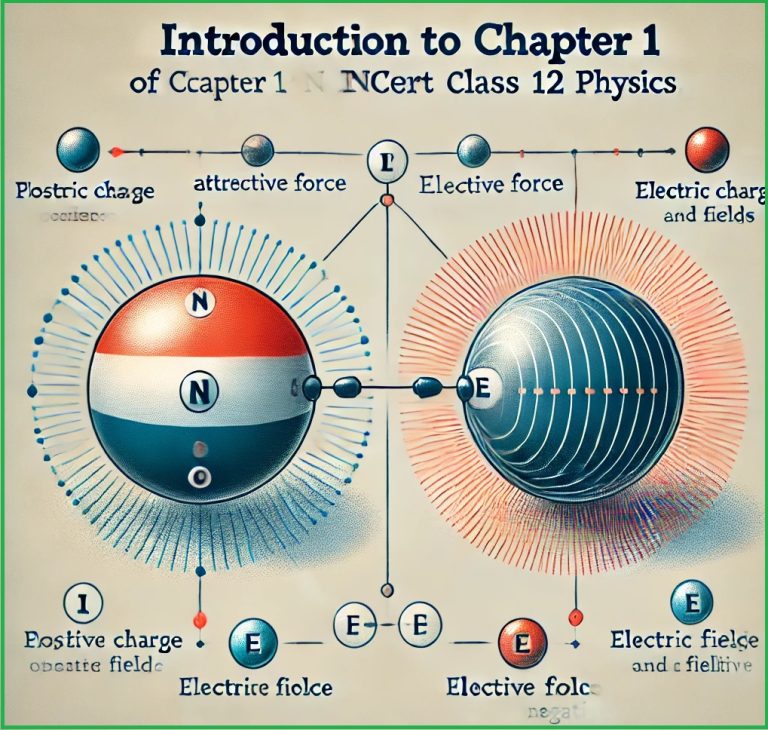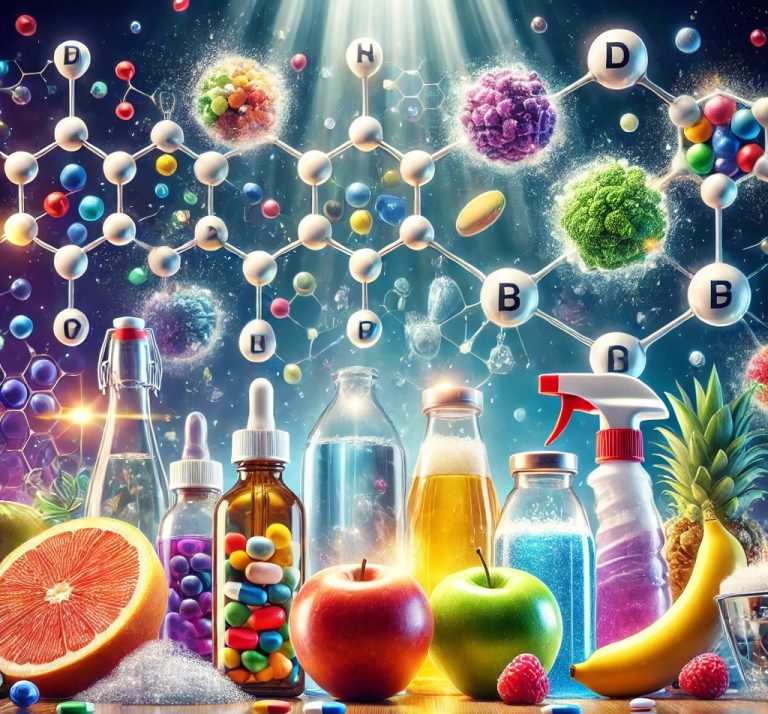1. Introduction to Ore Processing
The journey from raw ores to purified metals involves a series of essential processes. Metals occur in nature mixed with other elements as ores. To obtain pure metal, the ore must first be concentrated to remove unwanted impurities, followed by refining to reach a commercially usable form. Concentration and refining vary based on the metal type, ore characteristics, and industrial requirements.
2. Ore Concentration
Ore concentration, also known as beneficiation or ore dressing, is the process of removing unwanted materials, called gangue, from the ore. Gangue may include silica, alumina, and other minerals that do not contain the metal of interest. Concentrating the ore increases the metal content, making extraction more efficient. Several physical and chemical methods are used for concentration, each selected based on the ore’s properties.
2.1 Gravity Separation
Gravity separation is based on the differences in specific gravity (density) between the metal ore and gangue. It works well when the ore particles are significantly heavier than the impurities. This process includes:
- Jigging: The ore is agitated in water, causing heavier metal particles to settle and lighter gangue to float.
- Tabling: Crushed ore is passed over a vibrating table or inclined surface where heavier metal particles move to one end, while lighter impurities are washed away.
Gravity separation is commonly used for gold, lead, and iron ores.
2.2 Magnetic Separation
This method is effective for ores with magnetic properties, such as magnetite (Fe₃O₄). In magnetic separation, crushed ore is passed over a magnetic drum or belt that attracts magnetic particles and separates them from non-magnetic impurities.
Magnetic separation is often used for iron ores, especially those containing magnetite, and is also effective in recycling processes.
2.3 Froth Flotation
Froth flotation is particularly useful for sulfide ores, such as those of copper (chalcopyrite, CuFeS₂) and zinc (sphalerite, ZnS). In this process:
- The finely ground ore is mixed with water and chemicals that cause the metal-containing particles to become hydrophobic.
- Air is then introduced to create bubbles, which the metal particles attach to and rise as a froth, while the hydrophilic gangue settles.
This technique is highly selective and suitable for a variety of non-ferrous ores.
2.4 Leaching
Leaching is a chemical method that dissolves metal compounds from the ore using specific reagents. For example:
- Cyanide leaching is used to extract gold and silver from low-grade ores.
- Acid leaching can be used for aluminum in bauxite ore, extracting it as soluble sodium aluminate.
Leaching is especially useful for ores that are difficult to concentrate using physical methods. The resulting solution is further processed to extract the metal.
3. Refining of Metals
Once the metal is concentrated, it must be purified, or refined, to remove residual impurities and produce high-purity metal. Refining processes can be broadly categorized into pyrometallurgical and electrometallurgical methods.
3.1 Pyrometallurgical Refining
Pyrometallurgy involves high-temperature processing to purify metals. Major methods include:
- Roasting: This step is often used before smelting, where sulfide ores are heated in the presence of oxygen to convert metal sulfides into oxides, releasing sulfur dioxide gas.
- Smelting: In this process, the ore or concentrate is melted with a reducing agent like carbon to separate the metal from other elements. This method is widely used in extracting iron (in a blast furnace), copper, and lead.
- Converting: In copper extraction, after smelting, the metal is blown with air or oxygen to oxidize impurities further and refine the copper.
- Distillation: This process is used for metals like zinc and mercury, where the metal is vaporized and then condensed to separate it from impurities.
Pyrometallurgical refining is energy-intensive and often emits gases like SO₂, necessitating pollution control.
3.2 Electrometallurgical Refining
Electrometallurgy uses electrical energy to purify metals and is particularly useful for metals that form easily soluble ionic compounds. Common electrometallurgical methods include:
- Electrolysis: Used extensively for refining aluminum from alumina (Al₂O₃) and copper from blister copper. In electrolysis:
- An electric current is passed through an electrolyte solution, causing metal ions to migrate to the cathode and form pure metal.
- Impurities either remain in the electrolyte or fall to the bottom as sludge.
- Electrorefining: This process is used to purify metals like copper, nickel, and silver. An impure metal is made the anode, and a thin sheet of pure metal is the cathode. As electricity flows, pure metal is deposited on the cathode, while impurities form sludge.
Electrometallurgical processes can yield very high-purity metals but require significant energy, especially in aluminum production.
4. Purification Techniques
After concentration and refining, additional purification methods may be used to achieve desired purity levels, particularly for precious and high-tech metals. Some advanced techniques include:
- Zone Refining: A method used for producing high-purity metals, such as silicon for electronics. In zone refining, a metal rod is slowly passed through a heating coil, melting a small section. Impurities concentrate in the molten zone and move to one end of the rod as it solidifies.
- Vapor Phase Refining: Metals like titanium can be purified by converting them into volatile compounds (e.g., titanium tetrachloride, TiCl₄), which are then decomposed to yield pure metal.
- Electrowinning: Similar to electrorefining, electrowinning is used to recover metals from solution, particularly in hydrometallurgical processes, and is widely used for copper and gold.
These advanced techniques provide ultra-high-purity metals needed in electronics, aerospace, and other precision industries.
5. Environmental and Economic Aspects
The concentration and refining of metals have significant environmental and economic implications.
5.1 Environmental Concerns
Mining, concentration, and refining processes impact the environment in several ways:
- Energy Consumption: Pyrometallurgical and electrometallurgical processes consume large amounts of energy, contributing to greenhouse gas emissions.
- Pollution: Emissions from roasting and smelting, such as sulfur dioxide and particulate matter, can cause air pollution and acid rain. Chemical leaching can contaminate soil and water with toxic substances like cyanide and heavy metals.
- Waste Production: Mining generates large volumes of waste, including tailings and slag, which can leach harmful chemicals into the environment if not managed properly.
Efforts to mitigate these impacts include recycling metals, using renewable energy in extraction, and developing more environmentally friendly reagents for leaching.
5.2 Economic Considerations
The costs associated with metal concentration and refining depend on:
- Ore grade: Higher-grade ores are cheaper to process. As high-grade ore reserves deplete, lower-grade ores are increasingly used, which require more energy and complex processing.
- Technological Advancements: Innovations in concentration and refining technology can reduce costs and improve efficiency.
- Market Demand: Demand for metals drives their economic value, which affects the profitability of mining and refining operations.
Environmental regulations and technological innovations continue to shape the economics of metal production.
6. Applications of Refined Metals
Refined metals are essential across various industries:
- Construction: Steel (derived from iron) and aluminum are used extensively in buildings, infrastructure, and transportation.
- Electronics: Copper, gold, and rare earth metals are critical for electronic devices, including smartphones, computers, and renewable energy systems.
- Aerospace: High-purity titanium, aluminum, and specialized alloys are used in aircraft and spacecraft for their strength and low weight.
- Jewelry: Gold, silver, and platinum are valued for their appearance, malleability, and resistance to tarnish.
Each industry has specific purity requirements, which refining techniques help achieve.
10 common Questions related to the concentration and refining of ores, along with detailed answers:
1. What is ore concentration, and why is it necessary?
Answer:
Ore concentration, also known as beneficiation, is the process of removing gangue (unwanted materials) from the ore to increase the metal content before extraction. Concentration is necessary because most ores contain a low percentage of the desired metal. By increasing the ore’s purity, concentration improves the efficiency and cost-effectiveness of the subsequent extraction and refining processes, reducing the amount of waste and energy required.
2. What are some common methods used for concentrating ores?
Answer:
Common ore concentration methods include:
- Gravity Separation: Uses the density difference between metal and gangue particles. Effective for ores like gold and iron.
- Magnetic Separation: Relies on magnetic properties, ideal for magnetic ores like magnetite.
- Froth Flotation: Utilizes differences in surface properties for ores such as copper sulfide, where metal-containing particles attach to bubbles.
- Leaching: A chemical method where reagents dissolve metals selectively, used for metals like aluminum in bauxite.
Each method targets specific types of ores based on their unique physical and chemical properties.
3. How does gravity separation work for ore concentration?
Answer:
Gravity separation exploits the density difference between metal ore and gangue. The ore is crushed and mixed with water, then agitated or passed over a vibrating surface. Heavier metal particles settle or move in a specific direction, separating from lighter impurities. Techniques like jigging and tabling are forms of gravity separation. It is particularly effective for ores that are significantly denser than gangue, such as gold.
4. What is froth flotation, and why is it used?
Answer:
Froth flotation is a concentration method for sulfide ores (like copper, zinc, and lead). The ore is crushed and mixed with water, then chemicals are added to make metal particles hydrophobic (water-repellent). Air is introduced, creating bubbles that the hydrophobic metal particles attach to, forming a froth that floats to the surface. The froth is skimmed off, while the gangue settles below. Froth flotation is highly selective, allowing for effective separation of metal-rich particles from impurities.
5. What is ore refining, and how does it differ from concentration?
Answer:
Refining is the process of purifying concentrated metal to remove remaining impurities, resulting in high-purity metal. While concentration increases the metal content by removing gangue, refining focuses on obtaining metal free of impurities like other metals or non-metals. Refining methods vary, with pyrometallurgy (heat-based) and electrometallurgy (electricity-based) being common. Refining is typically the final step in producing commercially viable metals.
6. What are some common refining methods?
Answer:
Refining methods include:
- Pyrometallurgy: High-temperature methods like smelting and converting. Used for metals like iron and copper.
- Electrometallurgy: Electrolytic refining involves passing an electric current to purify metals like copper and aluminum.
- Distillation: Evaporates metals like zinc and mercury, condensing them in pure form.
- Zone Refining: Used for ultra-pure metals like silicon, where a molten zone moves along the metal rod, concentrating impurities at one end.
These methods remove residual impurities to achieve high-purity metals for industrial use.
7. What is the role of electrolysis in metal refining?
Answer:
Electrolysis is a key method in electrometallurgical refining. An electric current passes through an electrolyte solution containing the metal, where ions migrate to electrodes. The metal ions deposit on the cathode as pure metal, while impurities either remain in solution or settle as sludge. This method is widely used for metals like copper and aluminum, producing highly pure metals suitable for electronics and other applications that demand minimal impurities.
8. What environmental issues are associated with ore concentration and refining?
Answer:
Ore concentration and refining can cause significant environmental impacts:
- Air Pollution: Smelting and roasting release pollutants like sulfur dioxide, contributing to acid rain.
- Water Contamination: Leaching processes can introduce toxic chemicals like cyanide into water sources.
- Energy Consumption: Pyrometallurgical and electrometallurgical processes are energy-intensive, adding to the carbon footprint.
- Mining Waste: Tailings and slag, often produced in large volumes, can leach hazardous substances into soil and groundwater.
Efforts are being made to develop eco-friendly methods, improve recycling, and use cleaner energy sources in metal extraction and refining.
9. How does recycling help in reducing the need for ore concentration and refining?
Answer:
Recycling metals reduces the need for mining and processing raw ores, which conserves natural resources and reduces environmental impacts. Recycling processes require less energy compared to primary extraction and refining, as metals are already in a usable form. For instance, recycling aluminum saves up to 95% of the energy needed for primary aluminum production. By reducing reliance on new ore, recycling helps limit habitat destruction, pollution, and greenhouse gas emissions.
10. What are the economic challenges associated with low-grade ore processing?
Answer:
Processing low-grade ores is economically challenging because they contain less metal, requiring more resources to obtain a usable amount:
- Higher Energy Costs: More energy is needed to concentrate and refine larger volumes of ore.
- Increased Waste: Low-grade ores generate more waste, raising disposal costs and environmental concerns.
- Additional Technology Requirements: Extracting metals efficiently from low-grade ores often requires advanced technologies, which can be costly to develop and implement.
As high-grade ores are depleted, low-grade ores are increasingly used, spurring innovation in efficient extraction and sustainable practices to keep costs manageable.






